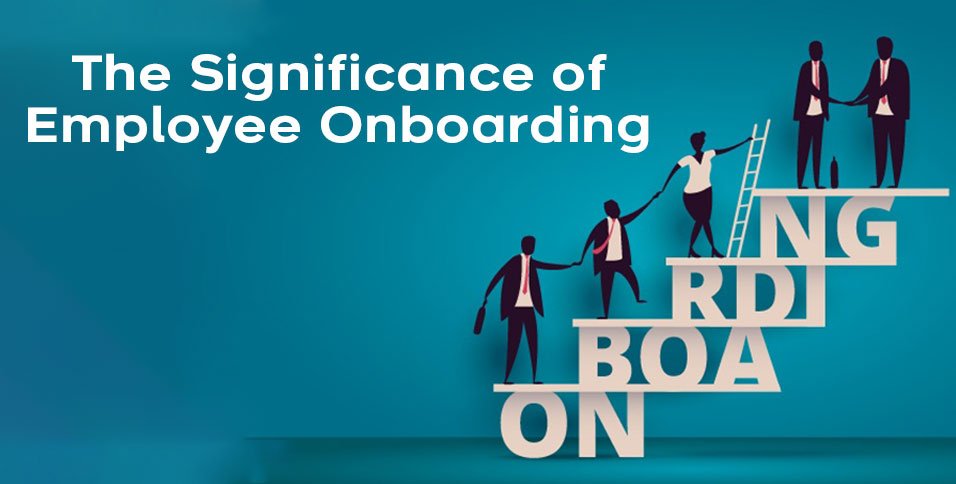Employee onboarding is commonly viewed as a method to familiarize hires with their job functions and duties within a company, often known as an orientation program. However, its importance goes beyond this phase.
The onboarding process plays a role in laying the groundwork for an employee’s experience, encouraging engagement, and ensuring the retention of valuable talent in the long run.
By adopting an approach that goes beyond orientation, organizations can effectively integrate new employees into the company’s culture while preparing them for success.
Employee Onboarding: Going Beyond Orientation
While orientation involves introducing employees to information like policies, procedures, and administrative tasks, the meaning of onboarding process delves deeper into fostering lasting employee engagement.
A. Establishing Clear Expectations for New Hires
An essential aspect of the onboarding process is establishing clear expectations right from the start. Clearly communicating job roles, responsibilities, performance metrics, and behavioral expectations offers clarity and encourages accountability.
By defining guidelines in an employee’s journey, companies align individual achievements with organizational objectives—leading to increased efficiency and productivity throughout the organization.
B. Establishing Strong Connections and Embracing Company Culture
An aspect of onboarding procedures is the integration of company culture, which goes beyond just offering orientation materials or explaining reporting hierarchies.
Through hands-on training sessions and immersive experiences involving team members, new employees gain insight into what it means to be a part of the organization they’ve recently joined.
Encouraging interactions between staff and new hires fosters meaningful interpersonal bonds and promotes cohesive team dynamics, resulting in heightened levels of dedication and a stronger sense of belonging.
C. Training Excellence and Skill Enhancement
While employees may possess skills upon joining a company, continuous training is vital for growth and adaptation as responsibilities evolve. The onboarding process should encompass opportunities for development through skill enhancement plans or focused learning sessions.
By prioritizing training efforts in employees’ tenure, organizations empower their new recruits to stay abreast of industry advancements while receiving assistance in mastering intricate tasks or gaining additional expertise.
While employees may possess skills upon joining a company, continuous training is vital for growth and adaptation as responsibilities evolve. The onboarding process should encompass opportunities for development through skill enhancement plans or focused learning sessions, ensuring employees remain competitive in their roles.
D. Employee Retention and Sustained Engagement
Escalating turnover rates among employees pose obstacles for businesses. Studies indicate that effective onboarding significantly contributes to reducing turnover rates by creating experiences that enhance job satisfaction and foster engagement.
Employees who feel appreciated and included in a work environment are more likely to develop loyalty to their organization. Effective onboarding programs help employees start off on the right foot, reducing uncertainties about their job performance and fit within the company—factors in retaining staff.
E. Monitoring and Improving Continuously
It is essential to monitor the effectiveness of the onboarding process for enhancements.
By collecting feedback from employees and their supervisors, companies can pinpoint strengths as well as areas needing improvement or facing challenges in the onboarding program.
This feedback loop allows organizations to make changes to keep the process relevant and efficient.
Regular check-ins with hires during their first few months can provide valuable opportunities for addressing concerns or providing additional assistance. This shows dedication to their success while opening doors for enhancement in the onboarding process.
Through evaluation and adjustments to the onboarding program, companies establish a cycle of improvement that enhances employee experiences, engagement, and retention over time.
Conclusion: Enhancing the Onboarding Experience
The onboarding process goes beyond an orientation—it lays the foundation for long-term employee engagement, dedication, and retention. By setting expectations, implementing integration programs, providing training opportunities, and focusing on long-term satisfaction, businesses can enhance the effectiveness of their onboarding strategies.
Putting in the effort to create onboarding procedures brings about advantages. When employees feel valued from the start, they are inspired to perform in their positions. Additionally, committed team members boost productivity levels, helping organizations reach their objectives efficiently.
In essence, a successful onboarding process demonstrates a company’s dedication not only to its staff but also to its own prosperity by nurturing a skilled workforce ready for expansion.
Also Read: What Is Employee Onboarding Software?















